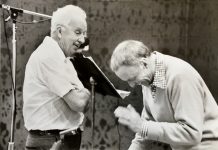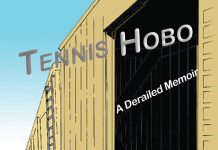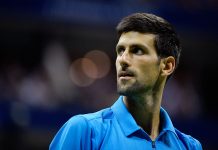Most all the icons of modern tennis have a role. Agassi was the twit-turned-sage, Billie Jean was the breathless pioneer, Navratilova was the contrarian. As for Pete Sampras, he was The Boring One. Or so we thought. Until he collapsed in exhaustion, broke down in tears and married a Hollywood starlet. Now the indrawn fellow who famously told us he “was a tennis player, nothing more nothing less” has written, with Peter Bodo, a revealing, opinionated autobiography, A Champions Mind: Lessons From a Life In Tennis (Crown Publishers, $24.95), which somewhat tells all (his long time ex-girlfriend is ignored) and doesn’t hesitate to blast conventional wisdom.
“Some people took it upon themselves,” Pete writes, “to interpret my extraordinary self-control as evidence of a lack of emotion. This struck me as pretty arrogant. I had emotions, alright, trust me on that; I just knew how to master them.” For instance, after dropping matches to Guy Forget and Henri Leconte in his first foray into Davis Cup, Sampras suffered a nightmare and awoke screaming at the top of his lungs, “GO, USA!”
Sampras called his teary meltdown at the ‘94 Aussie Open (when thoughts of the pending death of his beloved coach Tim Gullikson became too much) as “the longest 10 minutes” of his life. And he said his drive to stay atop the ATP rankings for a record sixth straight year “grew into an obsession” and his hair started to fall out in clumps.
THE EARLY DAZE
The kid who — over at the Kramer Club — they called “smiley” was hardly a product of hands-on/control-freak parents. In fact, his parents found out he won the U.S. Open only when they were strolling along at the mall some 3,000 miles away and noticed a familiar face being handed the trophy on the multi-screen wall of an electronics shop. Rather, the guy some have called the best to ever pick up a racket was a product of the most gifted Strokes-R-Us committee in tennis history. The highly controversial Pete Fischer switched him from a two-fisted backhand to a one-hander and taught him how to disguise his serve; the late publisher/coach Larry Easley introduced the serve-and-volley approach; Robert Lansdorp crafted his running forehand; and Del Little infused footwork and balance. Pete tells us that the no-nonsense Lansdorp would drive his hyperventilating sister Stella to tears during practice sessions. Sampras was always relieved after surviving a Lansdorp class. As for his formative coach, he says Fischer was “thickly built, with a big belly, and had one of the most horrific tennis games anyone ever laid eyes on. But he was a very smart, stubborn tennis visionary…a combination of mad scientist and general contractor” who he eventually dismissed when a raging Fischer made outlandish pay demands scribbled on a paper plate. Sampras reveals that he eventually loaned Fischer money and that, after his former coach was jailed on child molestation charges, Fischer wrote him many “long, rambling” letters from prison. Eventually, Pete was dismissive, saying, “Fischer was less like a genius than the guy who catches a world-record fish.”
MOMENTS OF TRUTH: Sampras says that his loss to Stefan Edberg in the ‘92 U.S. Open final forced him to confront himself. “I slowly came to a realization about myself that wasn’t very pretty. I didn’t tell anyone, not even Dad. It would have been easy enough to do; all I would’ve had to say was ‘Listen, I have a confession to make: I packed it in on some big occasions.’…That 1992 Edberg match was my Rubicon.”
Sampras eloquently describes the post-tie letdown that occurred after a successful Davis Cup effort. Says Sampras, “It was a lot like that classic Western movie The Magnificent Seven. You’re an eclectic group of gunslingers who came together to save the town, fending off the bad guys. Then when the job is done, you all drift off down the trail. Like those gunfighters, you’re a loner. A tennis player.”
PAINKILLERS, TREE-SWINGING APES AND OTHER REVELATIONS
SAMPRAS REVEALS THAT…: His all-time top-five are Laver, Borg, Lendl, Federer and himself…Out of the blue, Monica Seles confided in him when her father Karolj was dying of cancer…The infamous Andre-to-Pete dis “Nobody should be ranked No. 1 who looks like he just swung from a tree” was a Nike-orchestrated media stunt…Prior to his first win at the All England Club in ‘93, he was “baffled and frustrated” by grass…He got hooked on Indocin, a painkiller that he began taking to deal with discomfort in his serving arm…He secretly suffered from thalassemia — a mild blood-iron deficiency that’s common to men of Mediterranean descent…When Ken Flach once turned to Sampras during a Davis Cup strategy session and asked, “You going to serve and volley on both serves, Pete?” he just looked at him, thinking, “I’m one of the top players in the world, and you’re a doubles specialist who can’t even make it in singles. Where do you get off asking how I’m going to play?”


















